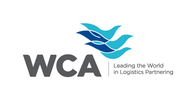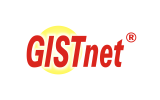

CB34u—Processing Additional Duties Imposed by the International Emergency Economic Powers Act (IEEPA)
Subscriber price: $28.00, Non-subscriber price: $37.00
Estimated total study time: 3 hours 23 minutes
![]()
This course delves into the International Emergency Economic Powers Act (IEEPA), a critical piece of U.S. legislation that grants the President broad authority to regulate international commerce in response to national emergencies. Participants will explore the historical context, legal framework, and practical applications of IEEPA, gaining a thorough understanding of its impact on global trade, national security, and economic policy.
IEEPA Background and Legal Framework
Heading 9903 Legislation outlines temporary modifications to the Harmonized Tariff Schedule of the United States (HTSUS) as a result of various trade legislation. These modifications include temporary quotas or increased duties and are detailed in Subchapter III of Chapter 99. The legislation encompasses several trade acts, such as the Agricultural Adjustment Act, the Trade Act of 1974, the Trade Expansion Act of 1962, and the International Emergency Economic Powers Act (IEEPA).
(Estimated study time: 45 minutes)
- Introduction
- Background and History of the International Emergency Economic Powers Act (IEEPA)
- Laws and Regulations Pertaining to IEEPA
- From Legislation to Tariff Classification
- 9903 Overview of Trade Remedies
- 9903 U.S. Notes
IEEPA Entry Filing Using Chapter 99
This lesson covers the procedures and regulations for filing general entries using Chapter 99 of the Harmonized Tariff Schedule of the United States (HTSUS). The lesson also explores the application of additional duties based on the country of origin, the handling of immediate transportation entries, and the implications for Temporary Importation Bonds (TIB). Special attention is given to trade remedies, duty deferral, and reconciliation practices for entries from Canada and Mexico.
(Estimated study time: 1 hour 11 minutes)
- Introduction
- Notification to the Public of Trade Legislation for IEEPA
- IEEPA Fentanyl Duties
- IEEPA Notices on Products of China and Hong Kong
- IEEPA Notices on Products of Canada
- IEEPA Notices on Products of Mexico
- IEEPA Duties Pertaining to Certain Oil Imports
- IEEPA Notices for Reciprocal Tariffs
- Notices for Low-Value Imports into the U.S.
- IEEPA Fentanyl Duties
- General Entry Filing Using Chapter 99
- Specific Tips for Entry Filing of IEEPA
- IEEPA Duties Determined by Country and Date
- Fentenyl Duties
- Recriprocal Duties
- Oil Duties
- Brazilian Imports
- Goods In-Transit
- Duty Drawback and Duty Deferral IEEPA Section 202
- Trade Agreements and Preference Programs Effect on IEEPA Duties
- HTSUS Chapter 98 and IEEPA
- Foreign Trade Zone Entries Under IEEPA
- De Minimis Section 321 and Entry Type 86 for IEEPA
- INFORMAL and De minimis Entry Guidance
- Mail Sent Through the International Postal Network
- Cargo Release/Entry Type 86 (ET86): All Modes
- Exclusions from IEEPA Tariffs
- IEEPA Duties Determined by Country and Date
- Supreme Court Review and Refund Implications for IEEPA Tariffs
General Tariff Classification, Post Entry and Other Considerations for Chapter 99
This lesson begins with detailed instructions on handling multiple HTSUS classifications on the same entry summary line when Chapter 98 or 99 is required. The rest of the lesson focuses on the procedures and best practices for handling U.S. Customs and Border Protection (CBP) rejects due to inaccurate classification or information in Chapter 99 of the Harmonized Tariff Schedule of the United States (HTSUS). It covers the common reject messages received by Automated Broker Interface (ABI) filers, the steps to correct and resubmit entries, and proactive measures to avoid such rejections. Additionally, the lesson addresses bond sufficiency considerations and customs broker billing practices for shipments subject to additional duties.
(Estimated study time: 1 hour 27 minutes)
- Introduction
- Reporting Multiple HTSUS classifications on the Same Entry Summary Line
- When Multiple Classifications on a Single Line Include Chapter 98 or 99
- Stacking of Certain Additional Duties
- GUIDANCE
- APPLICABILITY
- REPORTING
- EFFECTIVE DATE
- REFUNDS OF PREVIOUS DUTY PAYMENTS
- EXAMPLES
- CBP Rejects for Inaccurate Classification or Product Information in Chapter 99
- Post Entry for Goods in Chapter 99
- Bond Sufficiency for Products with Additional Duties
- Customs Broker Billing and Payment Considerations for Shipments with Additional Duty
- Proactive Recommendations When Clients May Be Affected by Temporary Import Legislation